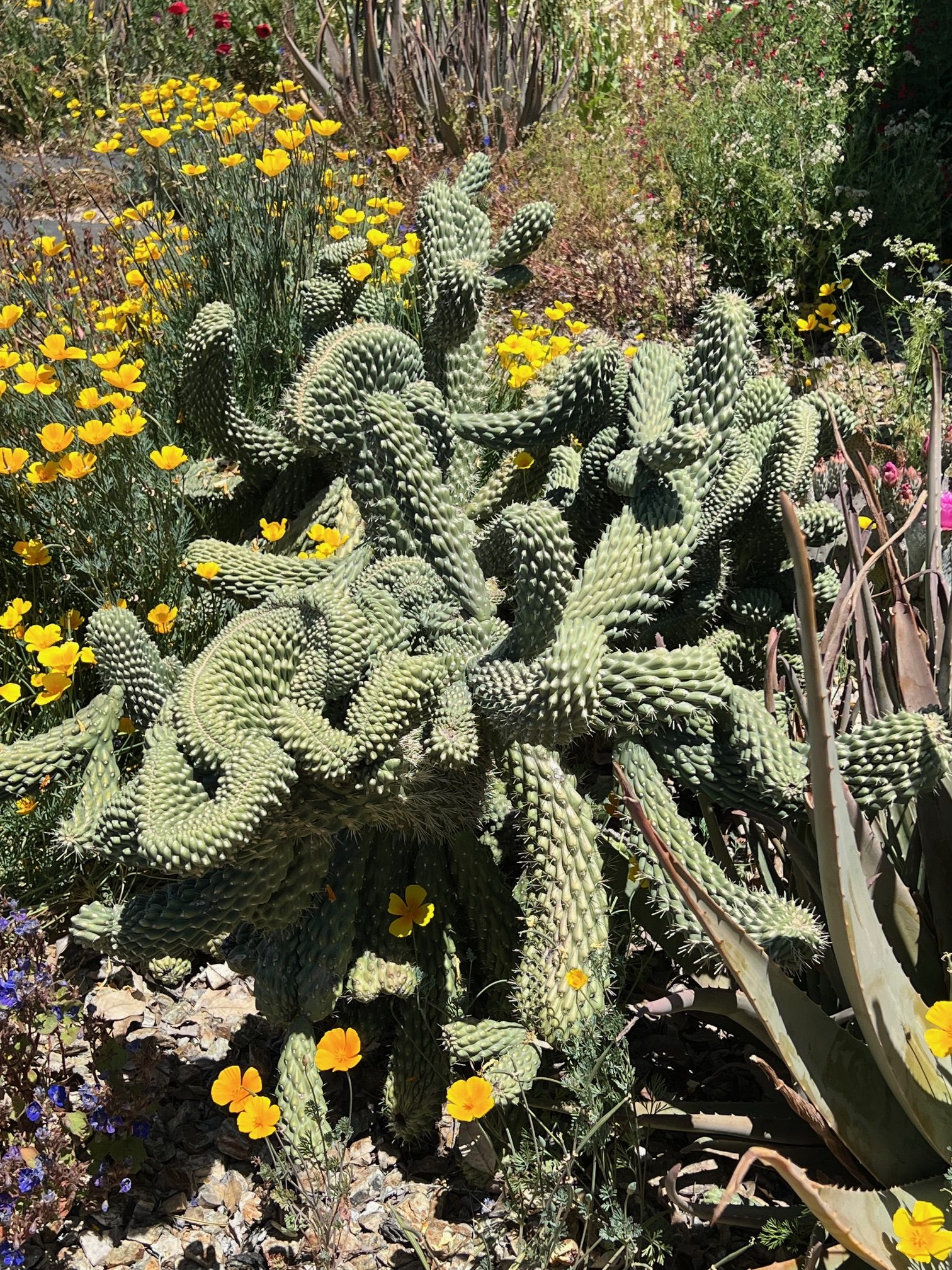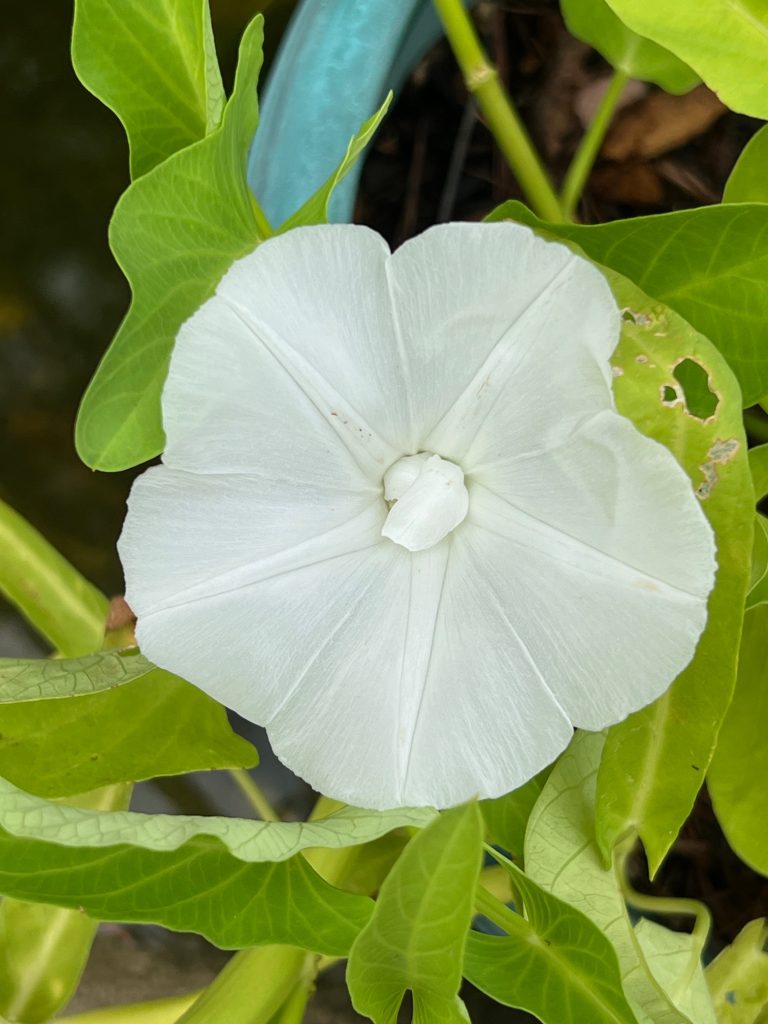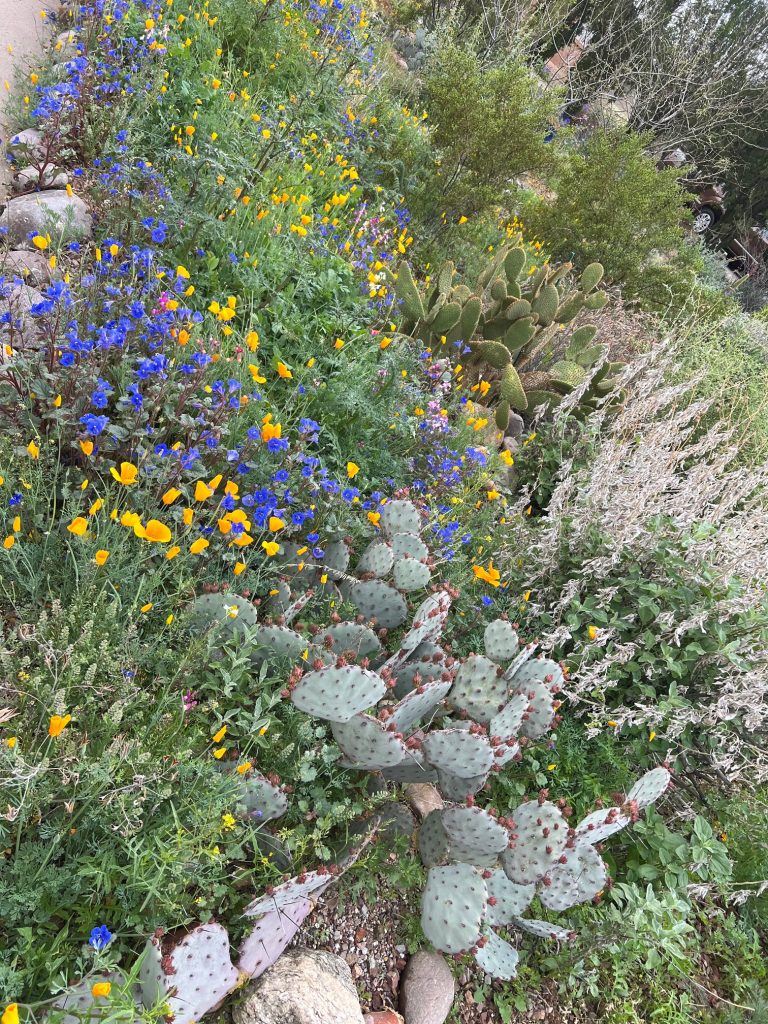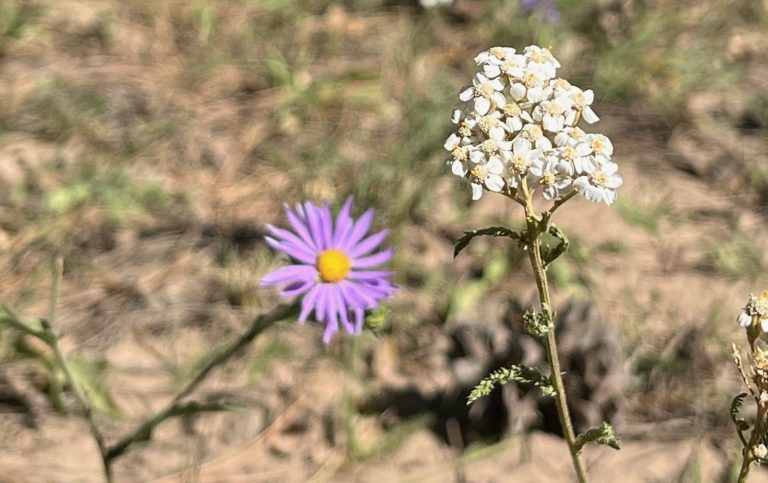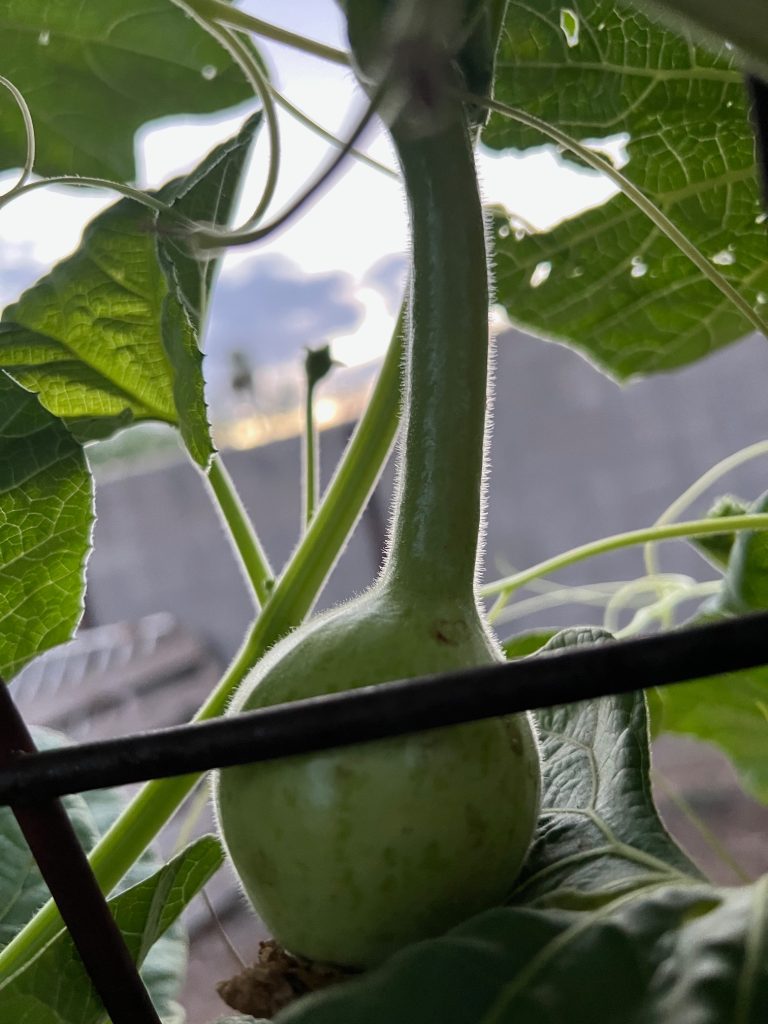Six Inches of Soil and Rain
Exposed soil in the desert is vulnerable. Here in the Sonoran Desert, if you go outside of the city and go for a hike, you will not see nearly as much bare earth as in developed areas. You certainly will see bare earth, as contrasted to somewhere like the Northwest where anywhere there is soil, something will be growing there. While exposed soil is usually a bad thing, such as large farms that do not plant cover crops over the winter and allow their topsoil to literally blow away with the wind, in this case it is a reflection of the density of plants that can be supported by the amount of water that is able to infiltrate the soil at that location. The roots of plants in the desert are often shallow and spread out quite wide, so even if the top of the soil is bare, the root systems stabilize the soil and prevent excessive erosion. Organisms that are adapted to this environment have developed physiology and lifecycles which enable them to persist. For example, I get these little brown mushrooms growing out of pieces of wood around my yard, but not wood that gets any water other than the rain. The spores survive in the soil until the conditions are right to grow a fruiting body… or maybe the mycelium itself is very drought resistant. I need to take a sample and put it under the microscope and see if I see any fungal strands.
Desert Soil is deceptive. Desert soil is resilient. It seems weathered and beaten down and does not appear good for life … that is, unless you are a cholla. We have to look at things differently. Here in Tucson, at the base of Sentinel Peak, there is a garden acting as a sort of living historical record in the form of plants. It is one of the longest known areas of continuous cultivation in the U.S. We have done quite a number on our water resevoirs, however, and obliterated the Santa Cruz River, which used to be an expansive, meandering mesquite bosque and riparian area. Now it is just a wash full of sand and shopping carts, but what’s crazy is that the average house receives enough rain just off of the roof to provide us with enough water for the year, on average. Combine water harvesting with reuse of water, like washing machine greywater, for landscaping, and we do not need to be using tap water at all. The city planners designed out the ability for rain to infiltrate the soil and recharge the aquifers, but there are quite a few people in Tucson that are working to change that.
I feel like the soil here in the low Sonoran Desert is very representative of society as a whole. Modern society has no attention span. We are used to getting information in short bursts, and not taught to think critically or dig deeper to gain a wider perspective on an issue.
What comes to mind when you think of the phrase “desert soil?” Do you think of huge rolling sand dunes completely void of any signs of life? It seems the most common definition of a desert is a large area which receives 10 inches or less of rain per year. I’ve also found deserts to be described as loosing more moisture through evapotranspiration than it typically receives in a year, but this definition is not quite accurate and I find it a bit confusing. Wouldn’t an area like that have to end up as a Sahara Desert type area since it would not be able to retain any water at all. Tucson has been collecting and storing water underground for longer than we have been around. A better definition was found on the Desert Museum website: “A desert is a biological community in which most of the indigenous plants and animals are adapted to chronic aridity and periodic, extreme droughts, and in which these conditions are necessary to maintain the community’s structure.” (https://www.desertmuseum.org/books/nhsd_desert) Tucson’s underground aquifers are estimated to be 7,000-8,000 years old, originating during the last ice age. (Tucson’s history https://www.desertmuseum.org/books/nhsd_deep_history.php) (geologic origin https://www.desertmuseum.org/books/nhsd_geologic_origin.php) (agricultural history https://www.missiongarden.org/timeline) .
I think that definition is missing desertification though. For example, in the Amazon, huge swaths of land are cleared to make grazing land to raise cattle. This causes desertification, as the plants and ecosystem which had developed there was catastrophically altered so much so that it changes the climate. Trees actually build rain (https://www.learningfromnature.com.au/how-to-get-more-rain/) through many different mechanisms, but when we clear an area like a rainforest we have effectively made a desert, or more desert like, environment.
Anyways so desert soil is looked at as deficient, unhealthy, even dead. Looking at it a bit differently, however, we can say that if you are plant that requires regular water and is not adapted to survive through 110+ degree summer days, say for an easy example, swamp milkweed. Unless you are in a riparian area or near a body of water, swamp milkweed likely will not be very happy if you plant it straight in typical Sonoran Desert soil. Likewise, if you take a cactus and plant it in a humid area which freezes regularly during the winter, it will not like life very much. I once saw a prickly pear cactus that someone planted in their front yard in Seattle, Washington. It was propped up with several sticks and still was slumped over so bad that I just wanted to put the poor plant out of it’s misery.
My point is that while we may feel like we have to suffer and struggle to exist in this environment, the native plants do not feel that way. They are designed to not only survive here, but to thrive and prosper. We just have to learn to live according to our environment and not in spite of it. There are countless traditional techniques for living in almost every environment on Earth, and when combined with modern techniques and technology, there is no where we can not support life.
I am writing a blog post about why I use the domain desertsoil.com for my Cholla Conspiracy Blog. Soil is frequently underestimated and vastly misunderstood. Modern chemical agricultural practices used by most commercial farmers make use of the soil only for the purpose of as a medium for plants to grow roots and stabilize themselves in. It is quite literally a type of hydroponic farming, whereby the soil is the inert media (thanks to pesticides, herbicides, fungicides) and the standard NPK nutrients are supplied in water soluble form. Huge volumes of this “fertilizer” is spread across the fields, where only a small portion will be available and used by the plants. The rest ends up in our waterways and creates a dead zone in the Gulf of Mexico which has been roughly the size of New Jersey. We import a lot of these chemicals, and we also use processes to produce it domestically. The production of nitrogen, for example, by the Haber-Bosch process uses large amounts of natural gas to produce anhydrous ammonia, which is directly available to the plant and bypasses natural biologic interactions between the roots and fungi, bacteria, nematodes, and other organisms. By the way, your human body produces nitrogen as well, which can be used as fertilizer (Urea – urine). I was told that in a year, one person can produce enough nitrogen to equal a 40 pound bag of fertilizer. We are only beginning to scratch the surface when it comes to understanding the relationships between different organisms underground and the plants we see above ground, but one thing is clear: plant physiology is designed to interact in many relationships with the soil biology to maintain it’s health, many of which are symbiotic relationships with soil microbes. One of these relationships between certain plants, such as leguminous plants (bean/pea pod producing) and a naturally available bacteria which takes nitrogen from the air (nitrogen = 78.1% of the volume of air) and makes it available in the soil for all other plants. So instead of chemical processes using large amounts of energy which then needs to be transported to where it is needed, one could simply plant a winter cover-crop of say, beans, or strategically plant beans throughout a corn field and not only would nitrogen be provided from the air, it is also is not going to wash off of the farm and into the waterways since it is not a synthetic water soluble form. It also promotes life in the soil which ultimately allows the plants to remain much healthier without having to resort to extreme measures, such as more chemicals. This was discovered in 1838 so the only reason we dump tonnes of the stuff on farms is to keep making huge profits for the the chemical agricultural industries. At the same time, the practice is destroying the land the farmer depends on and sooner than later this is all going to come crashing down. We export more topsoil (including the carbon content which is not replaced) in gross tonnage per year than any other export, and we don’t get money from it. It is due to poor land management practices (such as plowing, or leaving soil vulnerable to be carried off). The loss of the carbon content also requires that more water will be needed since the holding capacity of the “soil” is dramatically reduced without the organic material. I’m not sure who said it, but “Despite all our accomplishments, we owe our existence to a six-inch layer of topsoil and the fact it rains.” With that taken into consideration, it should be quite alarming that we are loosing so much topsoil. (https://www.sciencedaily.com/releases/2022/03/220316114958.htm) It probably shouldn’t surprise you that the produce grown on these modern farms are severely lacking in nutrition as well (https://www.ncbi.nlm.nih.gov/pmc/articles/PMC8801175/). It is like if all a human ate was pure carbohydrates, fats, and proteins, without any vitamins, minerals, antioxidants, etc. You could survive, albeit with severe nutrition deficiencies, scurvy, etc.
So let’s recap. Focusing only on nitrogen, the current standard is to pay for a form of nitrogen that, due to its chemical form and improper land management, washes off of the land and into the waterways creating huge dead zones in the ocean and polluting our water. Much of it is imported, increasing our dependence on other nations to produce our food, and it is also produced domestically which still uses large amounts of energy. So we are using large amounts of energy/money to obtain something that exists in huge volumes all around us and available for the cost of some beans, so that we can contribute to the huge dead zone in the ocean and produce a product which is highly inferior to that which farmers produced in the past or with sustainable methods.
People may say that farmers are mostly old guys that will not listen to anyone with new ideas as they have been doing it this way for long enough that it seems like the only way they can survive, but I believe that most farmers are essentially practical people, and they also are very knowledgeable about every detail of the farm and the weather/climate for as far back as possible. The fact is that farmers are stuck between the government (subsidies taken from tax payers and given to farmers as “crop insurance” as a method of control over the farmers and for pricing Mexican corn/etc out of the market) and chemical agriculture companies. The government makes sure they are able to stay in play enough to allow the huge chemical agriculture companies to have enough farms to reap huge profits from. The farmers are stuck in the middle and, although there are a few who have come to understand that sustainable practices make sense on so many levels: 1. quality of product including nutritional density, 2. input costs for production, 3. higher total yield (not of a single crop as in monocropping, but rather a larger total yield of marketable produce), 4. improving soil which continues to get better over time and continues to produce superior produce as well as 5. preserving the ability of the farm to continue being used as a means of producing food, 6. reduced costs in non-NPK chemicals as well, 7. reduced water burden due to higher carbon content (allow organic material to remain on land + biochar!) will allow many times greater volume of water to be held deep in the soil, 8. reduced medical costs/problems due to exposure to toxic chemicals, 9. the possibility of being able to collect and use your own seed instead of buying varieties from Monsanto or others that cost more and the plant produces substances such as glyphosate (carcinogen) and 10. I believe even reduced labor (I don’t know enough about large scale farming to say this for sure, but as one example consider that it is unnecessary and highly destructive to till the land every season, that’s a piece of equipment and a process that are no longer needed.)
Desert soil may not look like what you want on first glance, but depending on who or what you are, it may be the perfect, or only, thing to fit the bill. I am Sonoran. I am soil.
[I may still edit this a bit but I want to post it. I wrote it a little while ago but I don’t think I was finished. I think I will not do blog posts like this anymore, like ones that take research, if I am going to do something like that I will make an articles section and put it there. I need blogs to be basically stream of consciousness and hopefully I can get more consistent with them. =) ]

